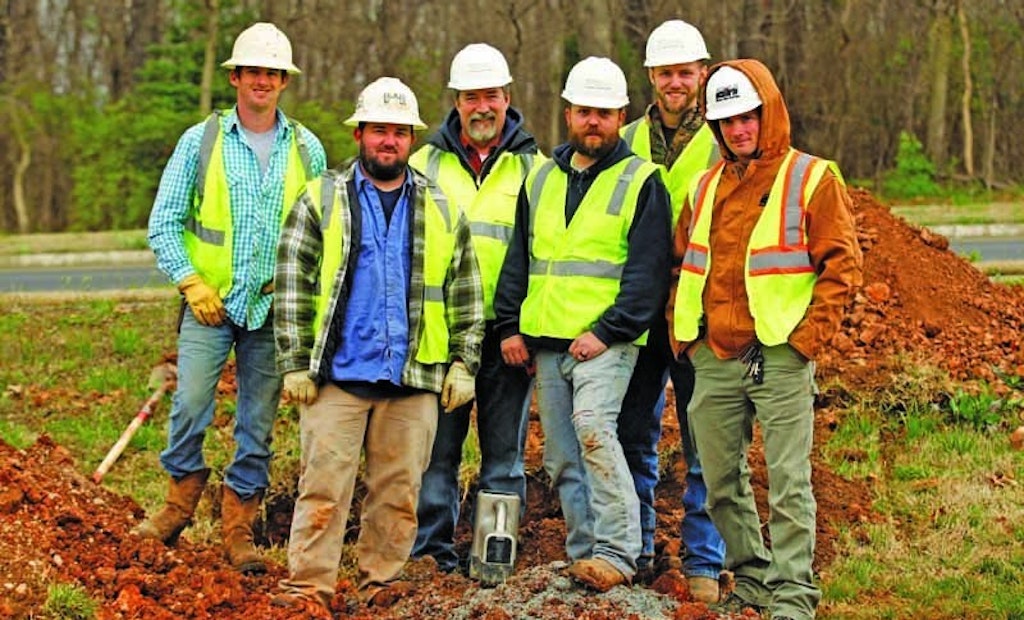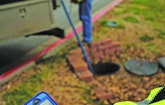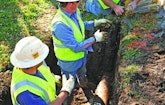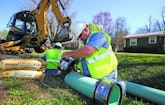
Interested in Rehab/Relining?
Get Rehab/Relining articles, news and videos right in your inbox! Sign up now.
Rehab/Relining + Get AlertsLess than 30 years ago, the sewer and water utility of Fayetteville, Arkansas, was dogged by negative headlines — and worse, fined by the Environmental Protection Agency — for generating hundreds of sanitary sewer overflows a year due to inflow and infiltration.
Today, the same utility has made a remarkable turnaround, cutting SSOs to zero.
Now Fayetteville faces a different sort of challenge — maintaining its positive record going forward under new leadership. With the transition in top management at the utility, it will be a test of how well the institutional lessons behind the achievement are baked into the utility’s culture. At the same time, the new management knows the operation can’t sink into complacency, but instead must remain open to new opportunities for improvement.
“It takes a certain kind of management style to come into an organization and, rather than put your legacy on the system, just keep it going and improve it every step of the way,” says Fayetteville Water & Sewer director Tim Nyander.
“The employees reinforce that what we’re doing is worthwhile,” adds operations manager Mark Rogers.
The continued growth of the region adds to the utility’s daily challenges.
‘Slap in the face’
In 1989, Fayetteville experienced more than 1,600 SSOs — and of those, two-thirds weren’t even discovered until well after the fact as the city analyzed the condition of its system. That year the utility received both a fine and an administrative order from the EPA.
The fine “was a cold slap in the face,” says David Jurgens, Nyander’s predecessor, who is now director of utilities for the City of Chesapeake, Virginia, and has written a 20-year retrospective paper on the Fayetteville experience.
Complying with the EPA’s administrative order, Jurgens — who went to work for the city in 1992 after a 10-year Army combat engineering career — writes in his paper that Fayetteville installed flow monitors to identify the worst I&I sources in the system, undertook a sanitary sewer evaluation study to pinpoint faulty lines and manholes, and took additional measures to collect more data.
Expanding operations
The water and sewer utility added crews and equipment for its field operations division. It acquired a fusion machine and slip-lined extensive stretches of sewer line. And it acquired a CCTV and grouting van and trained crews to use it.
Much of the sewer collections system consisted of clay pipe dating back to the early 20th century. So Fayetteville undertook an extensive pipeline rehab campaign, employing a variety of approaches that included cured-in-place pipe lining, open-cut replacement, pipe bursting, point repairs and further manhole rehabilitation.
A wastewater system improvement project launched in the early 2000s and completed in 2008 expanded the system’s treatment capacity — including extensive pump station upgrades and a second treatment plant — to account for the continued persistence of I&I problems.
Continued attention
Sewer cleaning is now on a cycle that calls for every line to get washed at least once every five years. Chronic root problems are dealt with by lining or replacing affected pipes to make them root-proof instead of simply cutting roots time and again. And the rehabilitation program is ongoing, with every SSO — “even a single gallon out of clean-out,” Jurgens writes in his paper — targeted for CCTV inspection and analysis to eliminate overflows at the site.
The two-decade effort cost north of $250 million, but it essentially eliminated SSOs. More is yet to come, though. “The rehab will never stop,” Jurgens says. “The system constantly evolves. Hopefully it gets easier with time because you have fewer things to do.”
Rebuilt system
Nyander worked with Jurgens for about a year before succeeding him when Jurgens went to Chesapeake. Nyander had previously worked for Joplin, Missouri, for 30 years.
Nyander says when he arrived in Fayetteville, he found a rebuilt wastewater system. “I was very pleased with the sewer collections system and the wastewater treatment facilities.”
Rogers is also relatively new to the city, having worked for Tulsa, Oklahoma, for 33 years. Coming to Fayetteville, he found “the major problems had been taken care of,” he says. “It was just making sure those routine things were done.”
Those included a strict routine for chemical root control, frequent cleaning in areas prone to clogging from sources such as grease and roots, and aggressive follow-through on overflows.
The city also continues to bring in a contractor each year for CIPP work and manhole rehabilitation. Inspections throughout the year keep the priorities fresh.
“We televise on a daily basis — not just when there’s a problem,” Nyander says. “That helps us find places that need to be repaired.”
Rogers notes that the key is having crews that are looking at every part of the system on a regular basis.
New opportunities
The strong systems and routine already in place allow the utility to focus on the other side of its mission — distributing water. And across both the sewer and water divisions, Nyander says, Fayetteville is looking to make use of a wide range of new technological opportunities.
The city has given its GIS system a close review to make sure its records are accurate in identifying all utility elements and fixtures. But its embrace of technological aids has gone much further.
That includes bringing billing and metering into the smartphone age. It also includes employing software and new devices to improve inventory management. And the city is in the process of an extensive review of new leak detection solutions.
“We are researching the different software programs and services used for backflow devices,” adds Rogers. Currently, the backflow monitors are tested and inspected annually; the city is considering whether it could automate the process.
Persistent growth
Challenges remain.
“Northwest Arkansas is continuing to grow,” Nyander points out. Fayetteville is one of four cities clustered in the area that together account for half a million people.
“Over 20 people are moving in per day to the area,” he continues. “The challenge that will be there for everybody is capacity” — on both the water and sewer systems. “We’re in good shape there, but we just have to keep a mindful eye.”
Commitment to technology
That’s why keeping up with tech developments is so important.
“It’s a commitment of the utility to incorporate new technology in our practices,” Nyander says. “There’s a fine line between being a leader and being a guinea pig. We always want to use tried-and-true methods, but at the same time we want to be on the leading edge in technology.”
For example, just as Fayetteville embraced CIPP lining on the sewer side, it’s looking at trenchless rehabilitation options on the water main side, says Rogers — most recently with the purchase of a directional boring machine from Vermeer.
“It saves a lot of time and a lot of money in some cases, especially in the historic district of the city where you can’t really tear up the roads,” Nyander adds.
Even as Fayetteville looks forward to continued improvement, it’s also looking back to make sure the lessons it learned over 20 years of working to eliminate SSOs are not forgotten. As Nyander puts it, “There are a lot of places where we don’t need to reinvent the wheel. We just need to continue going on.”










